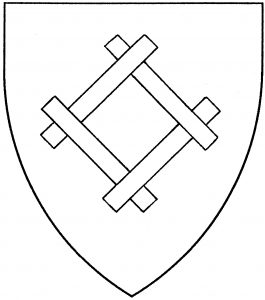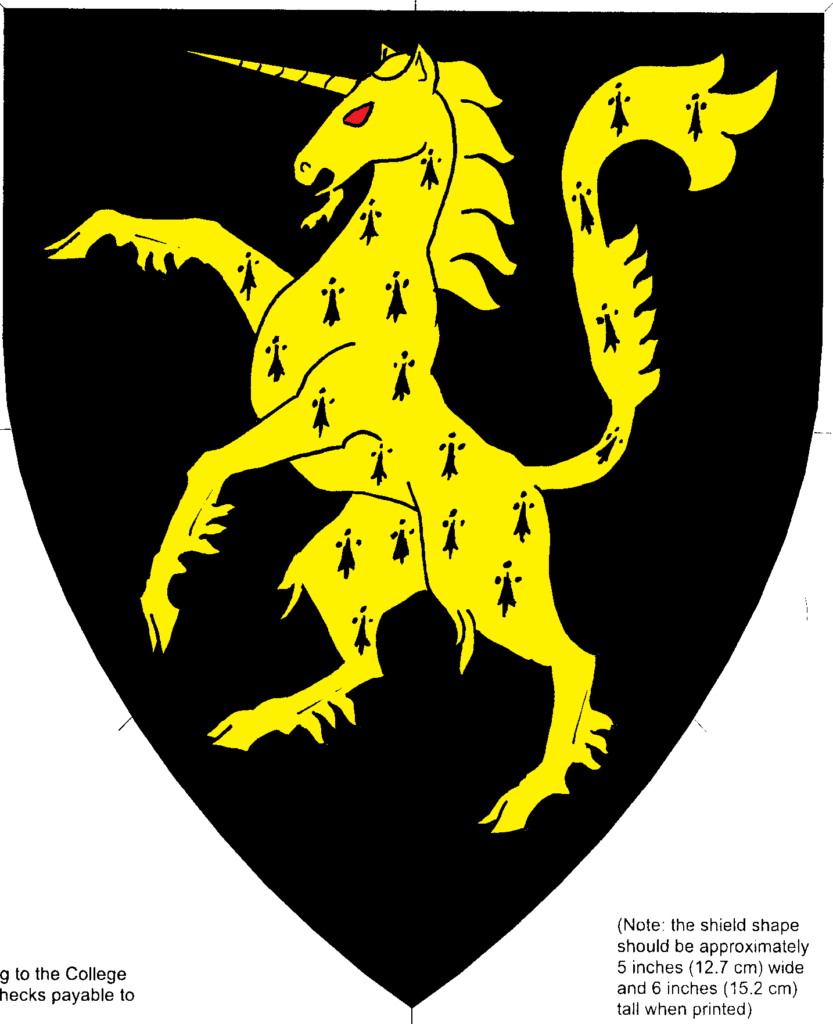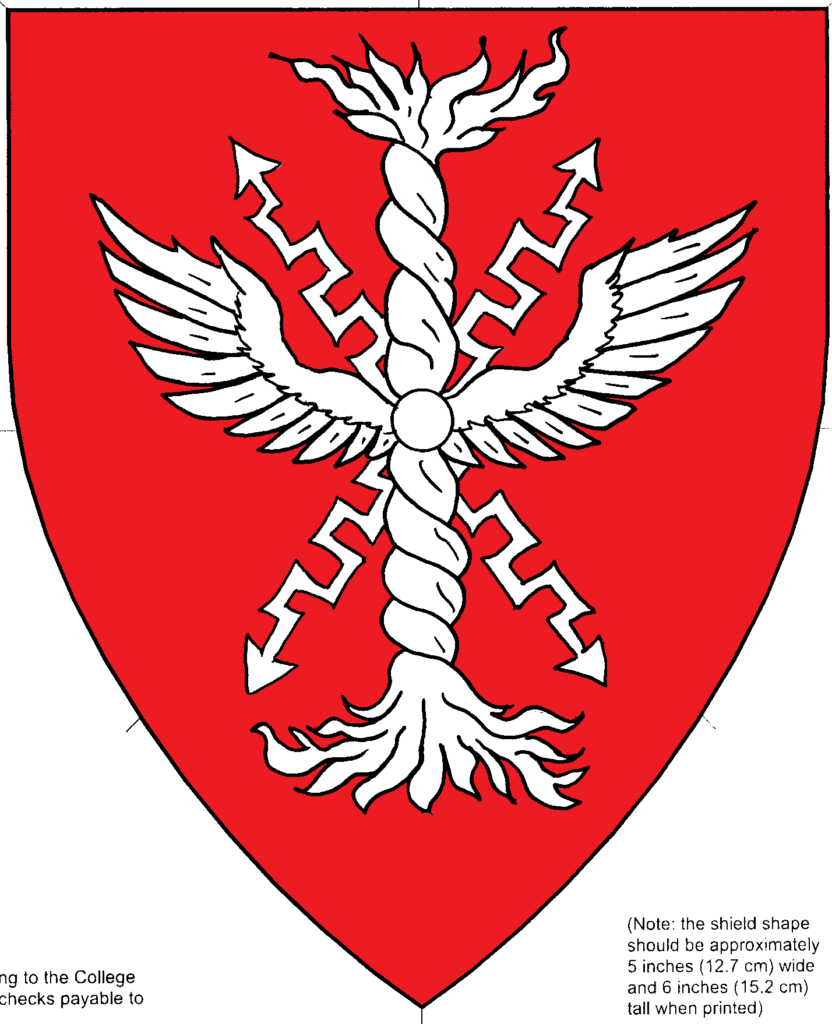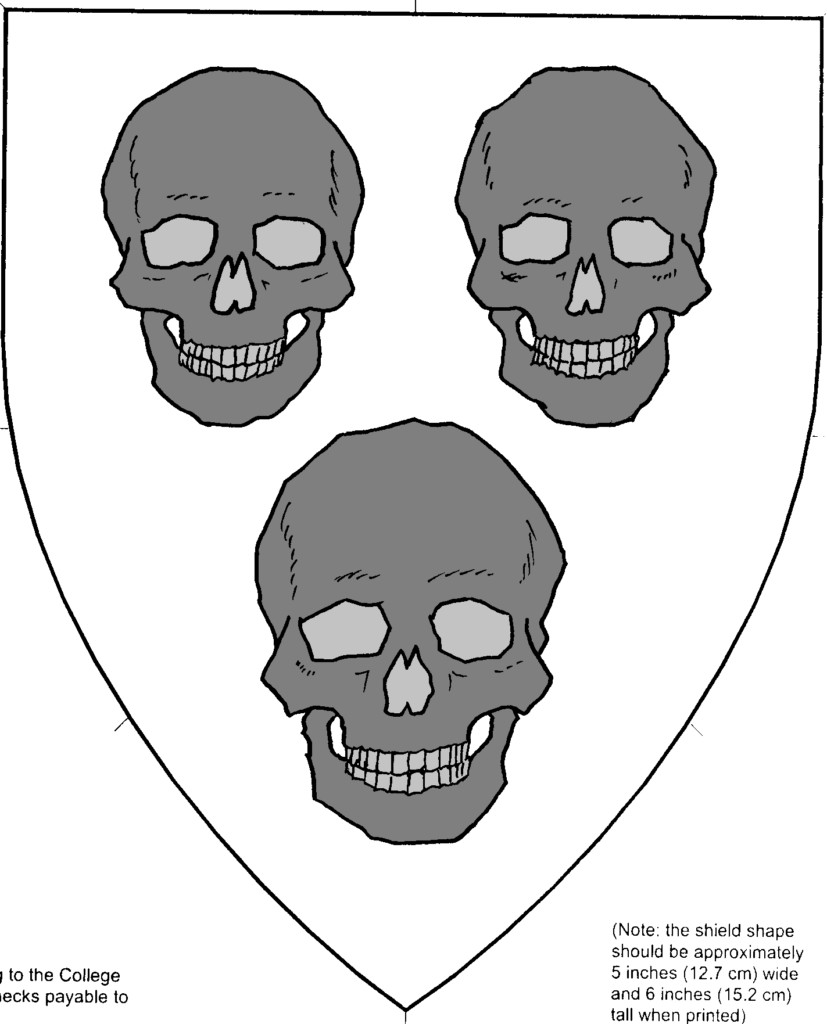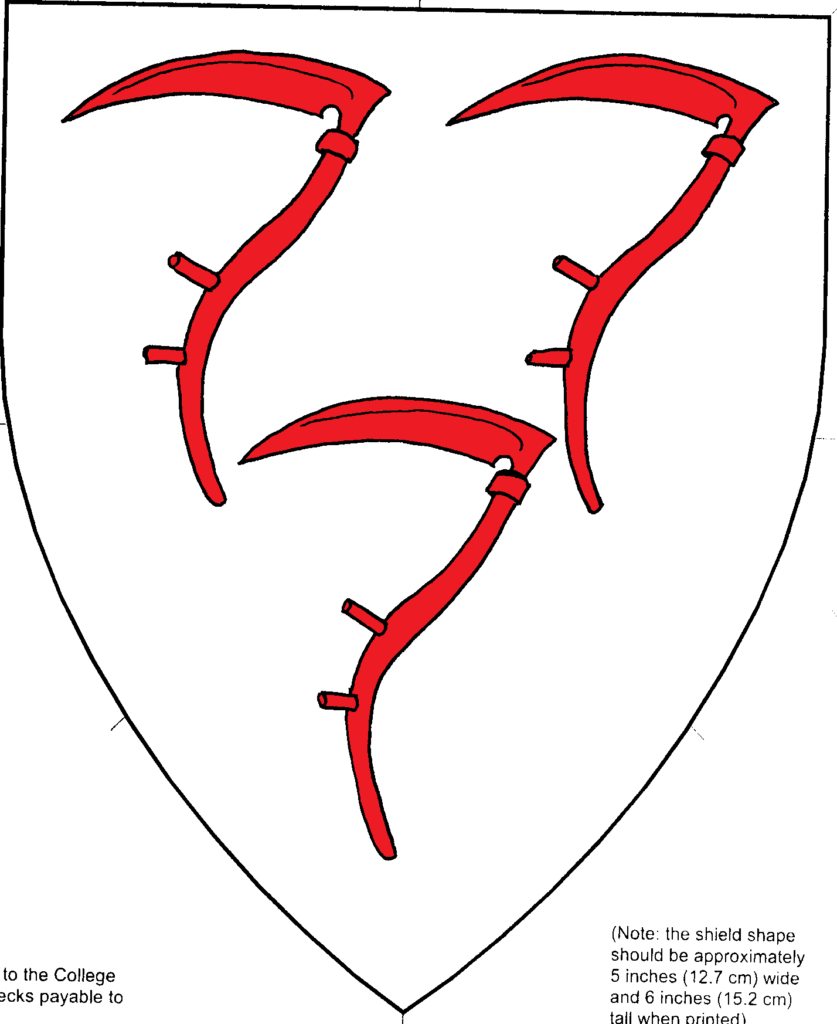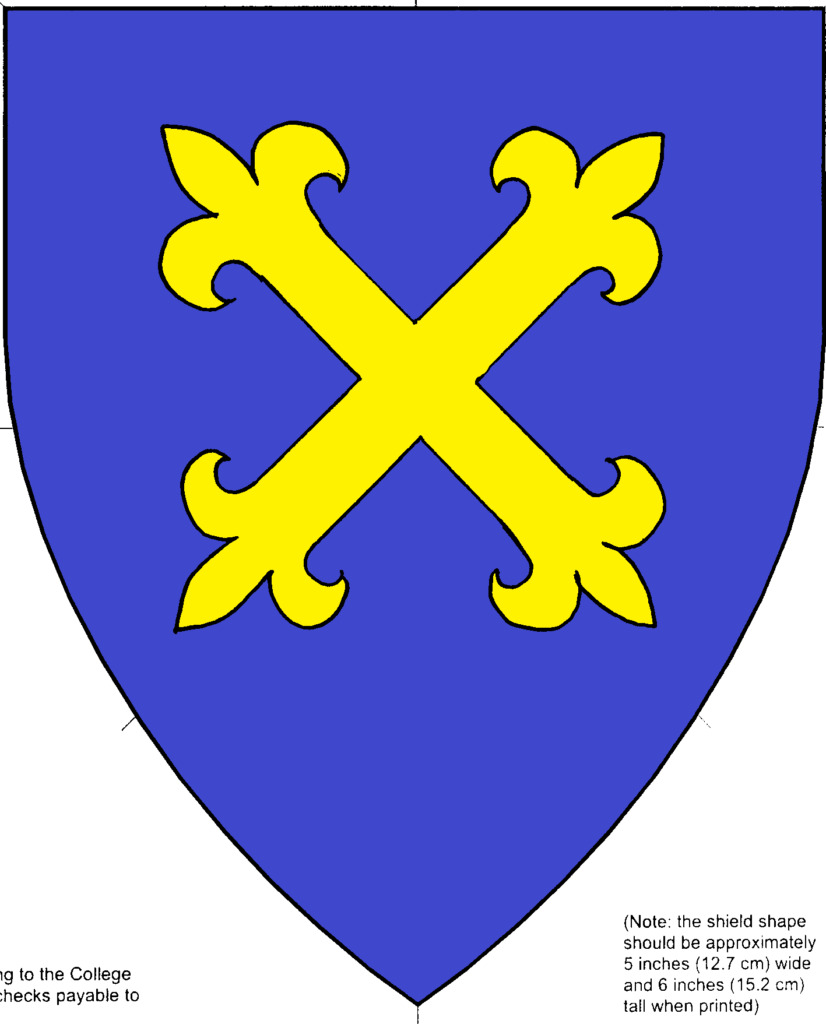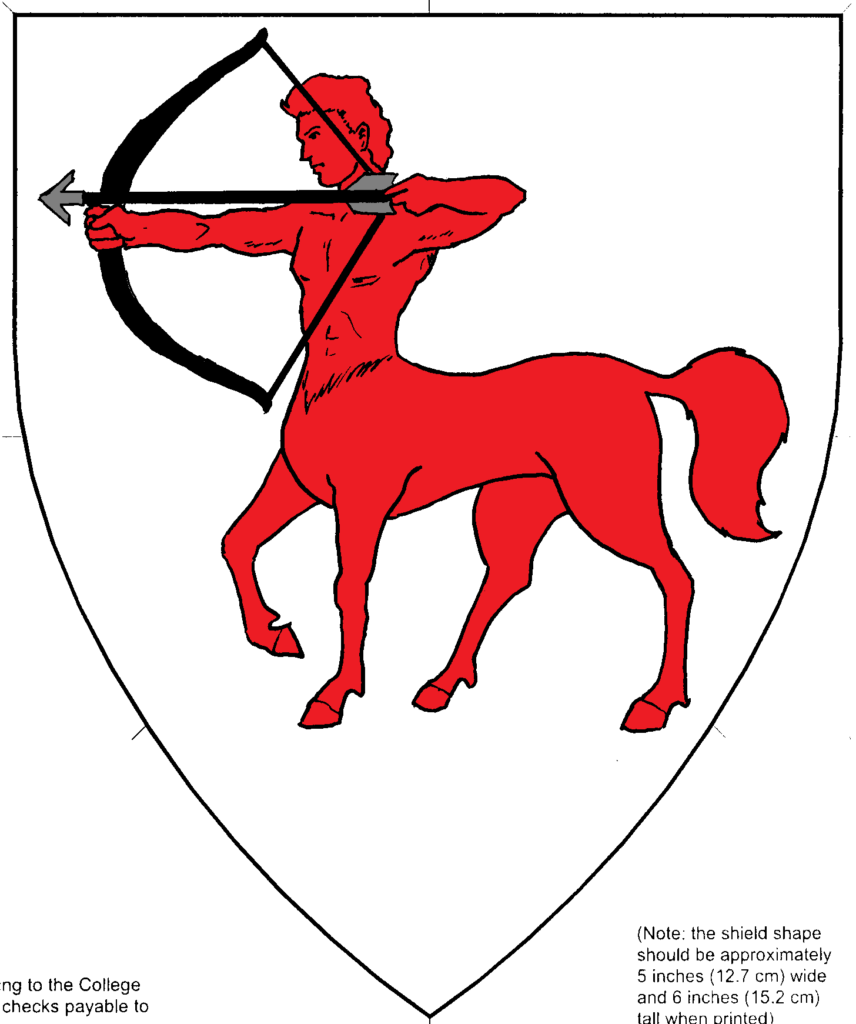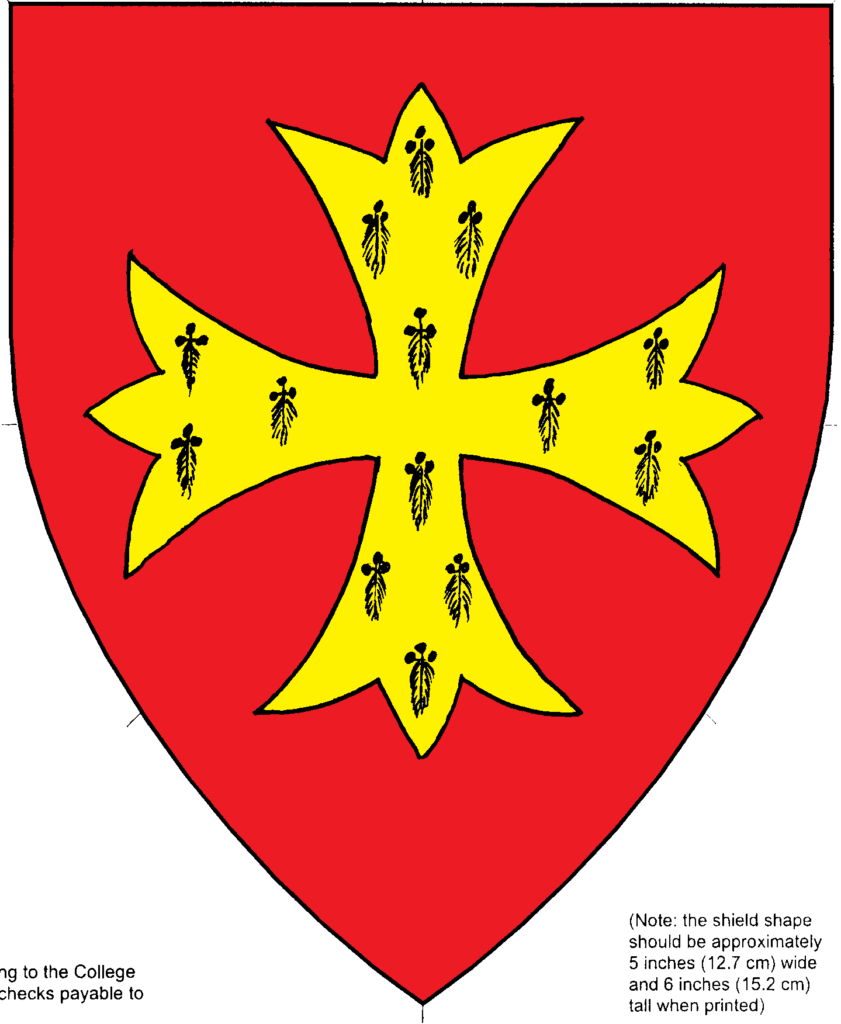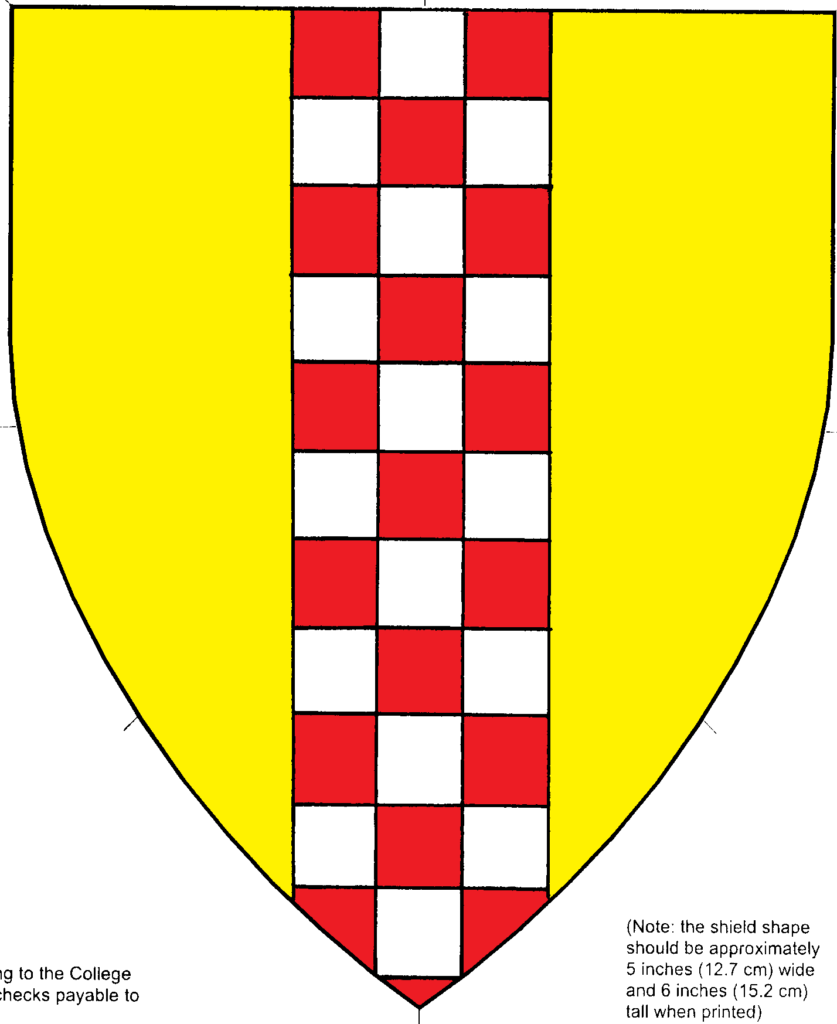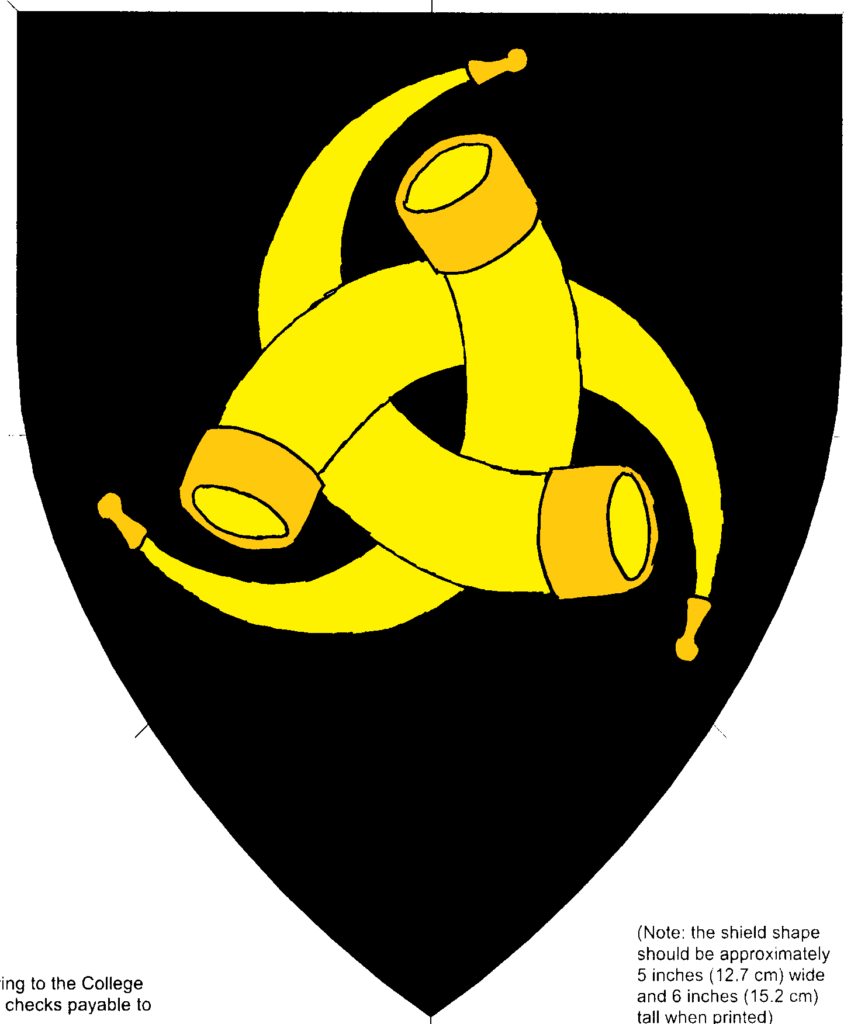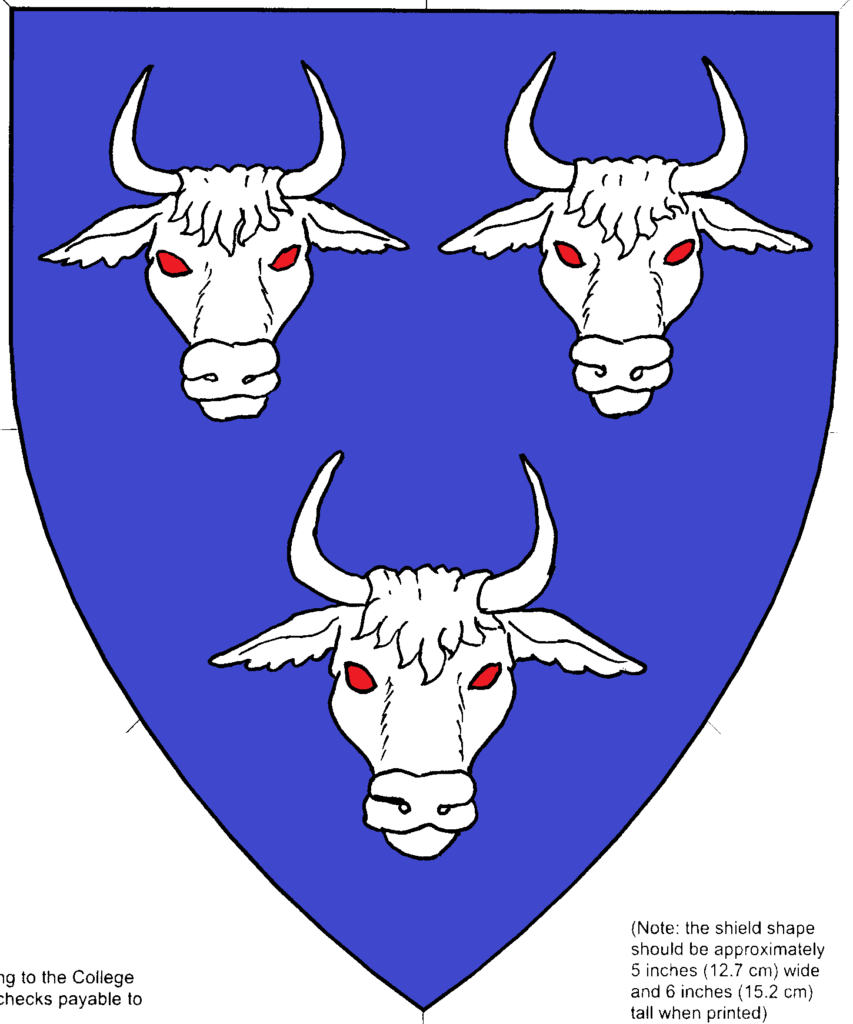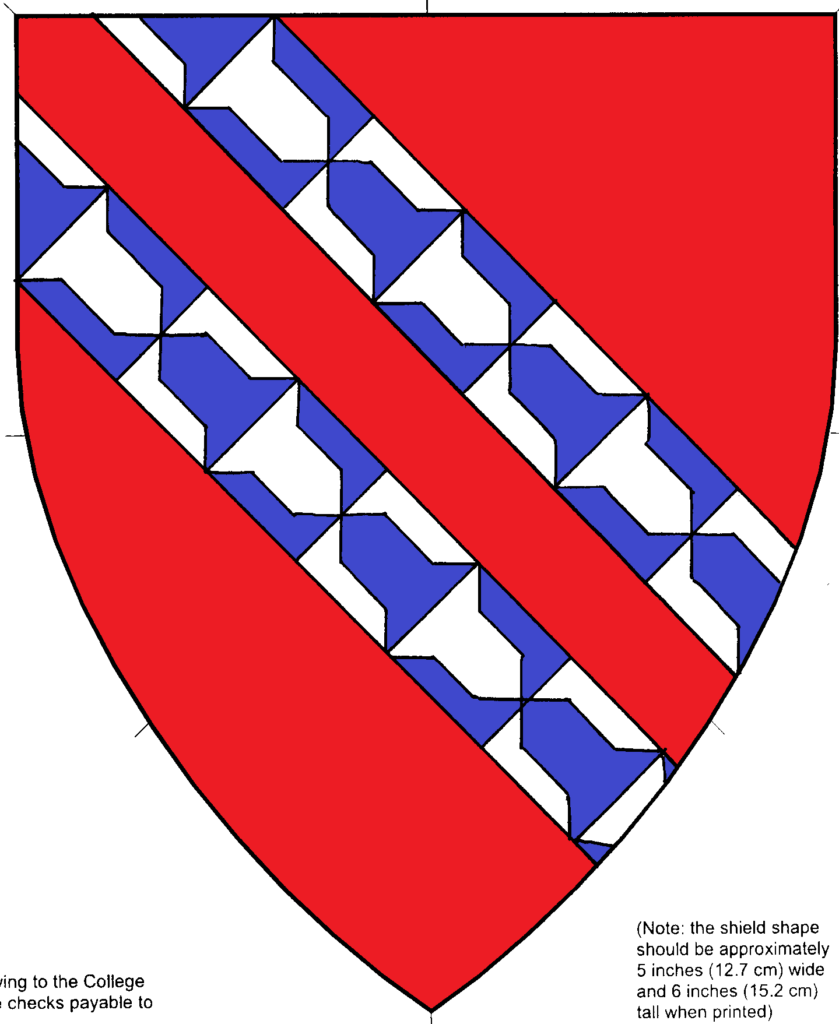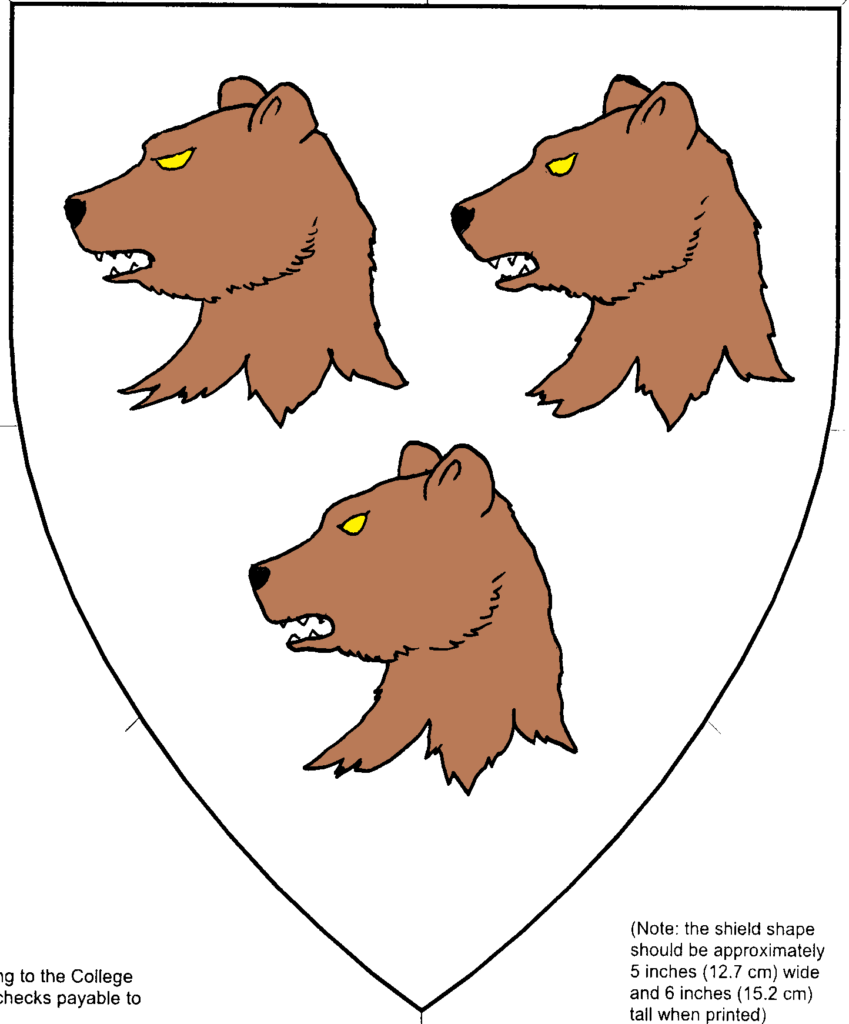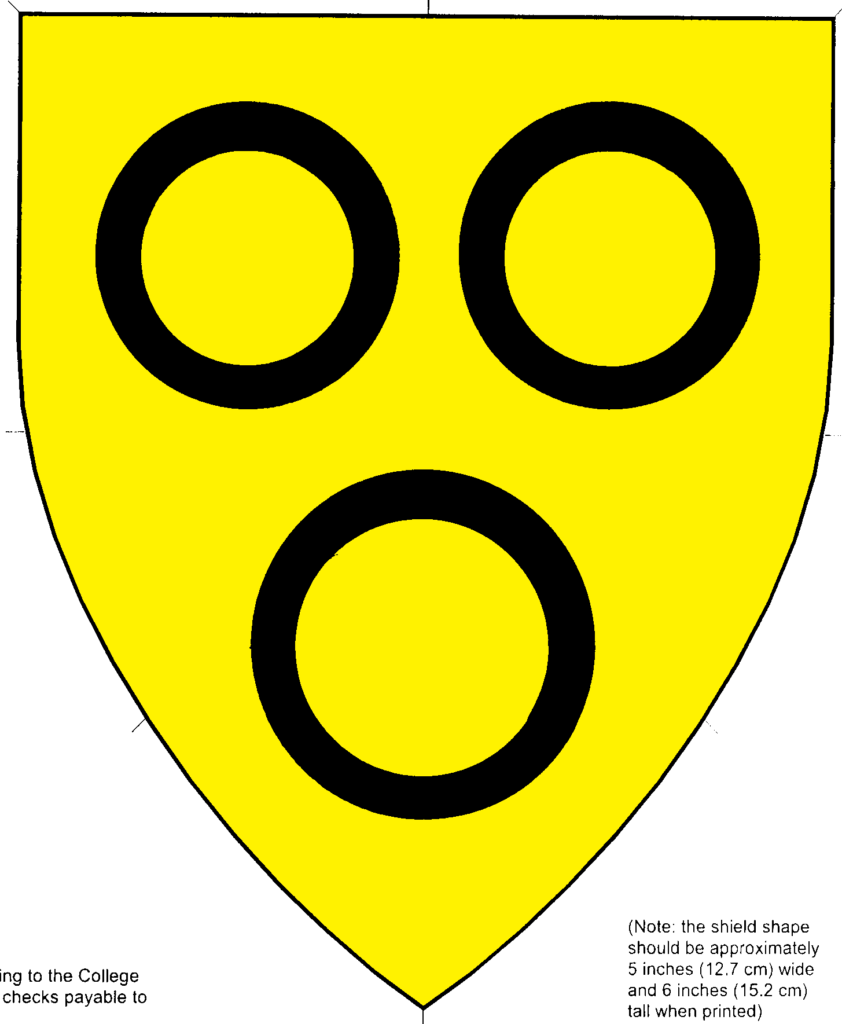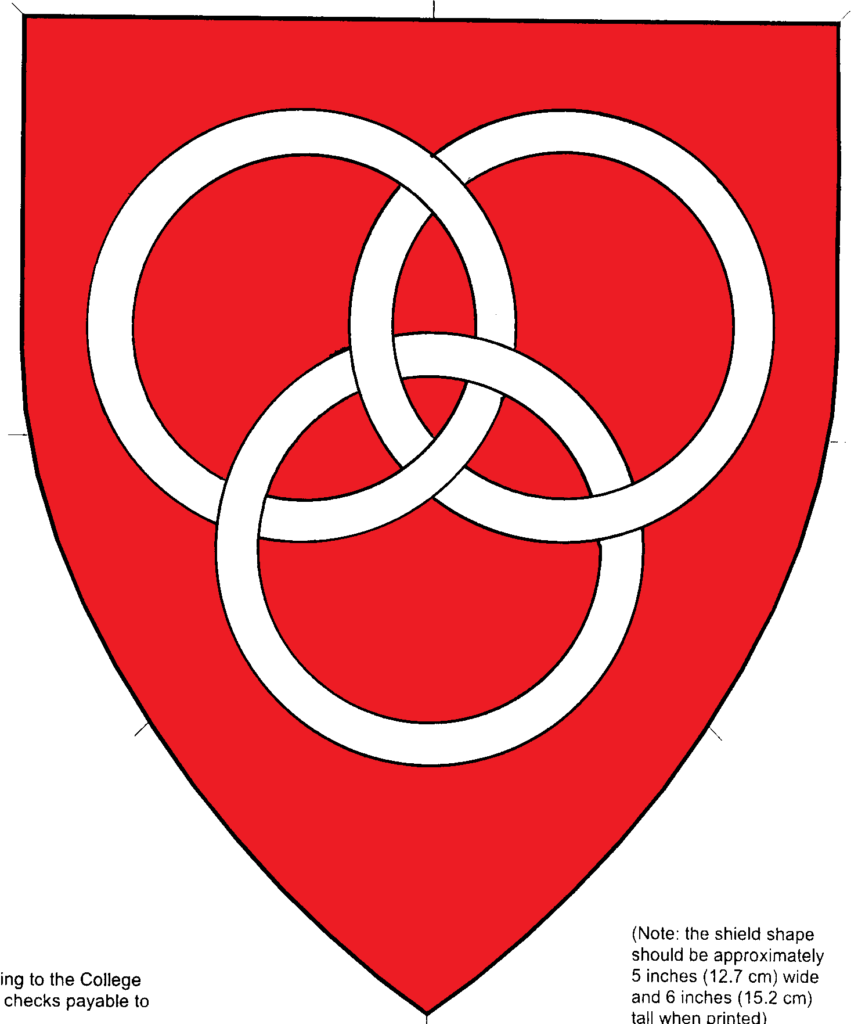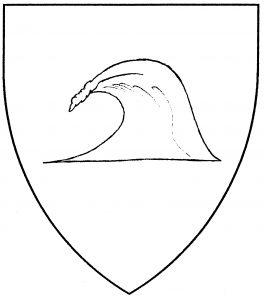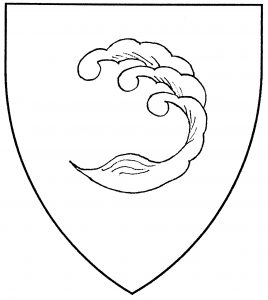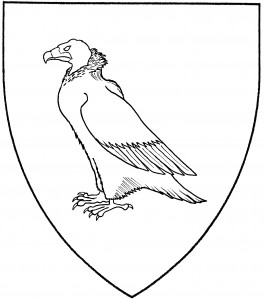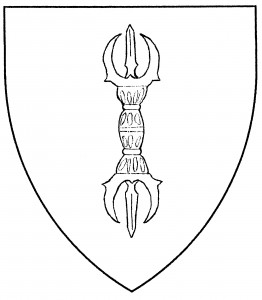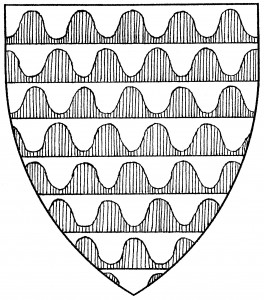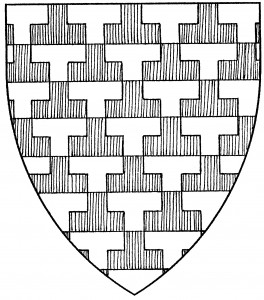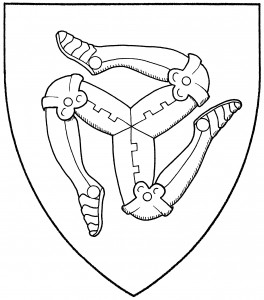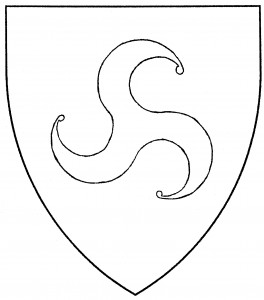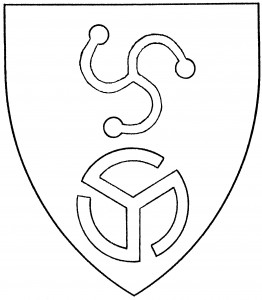A tree is a large plant, with a main wooden trunk branching into foliage at the top. Its “proper” coloration is with green leaves and brown trunk. A tree “fructed” is bearing fruit, whose color may be specified; the fructing may also be considered artistic license, and added to a tree whether blazoned so or not.

Oak tree (Period)
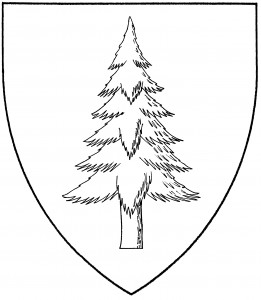
Pine tree couped (Period)
In heraldic art, the tree’s leaves and fruit may be drawn much larger than in naturalistic art. Early examples, such as the canting arms (German Eich, “oak”) of von Eyck, c.1360 [Gelre 32v] show a very simplified and stylized form of tree. Later depictions, such as the oak tree in the allusive arms (Italian bosco, “wood”) of dal Bosco, mid-15th C. [Triv 78], are closer to natural art but still exaggerate the size of the leaves and fruit [see also de Bara 75-77]. (Swedish heraldic art in particular is noted for this.) Finally, by the end of period, trees were drawn very naturalistically, as with the oak tree in the arms of Eychhauser, 1605 [Siebmacher 63], to the point that the type of tree becomes difficult to tell. The exaggerated style is therefore encouraged in the Society; a tree whose type cannot be determined is likely to be blazoned simply as a “tree”.
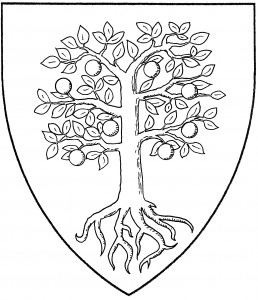
Orange tree fructed and eradicated (Period)
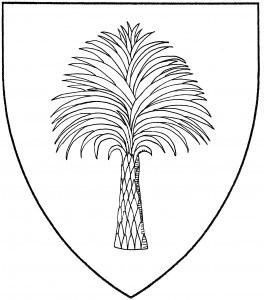
Palm tree couped (Period)
Many types of tree are found in heraldry. The oldest and most common type is the oak tree, found in the canting arms of Okestead, 1275 [ANA2 551]. (Indeed, if no specific type of tree is blazoned, the oak may always be used.) Many other types of tree are also found in period: the pear tree in the canting arms of Piriton, c.1285 [ANA2 551], the walnut tree in the canting arms (Latin nux) of de Noxigiis, mid-15th C. [Triv 247], the olive tree in the canting arms of Oliveira, c.1540 [Nobreza xxxv], the beech tree in the canting arms (German Buche) of Bucher, 1605 [Siebmacher 64], the rowan tree in the canting arms (Italian sorbo) of Sorballi, c.1550 [BSB Cod.Icon 273:239]. (It should be obvious by now that cant was the primary reason in period for choosing a type of tree.) Society armory has instances of the pine, the linden, the ash, the yew, and the palm, among many others.
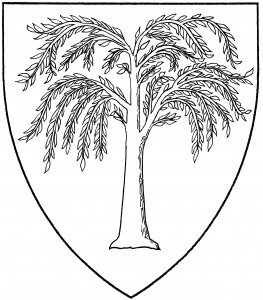
Willow tree (Period)
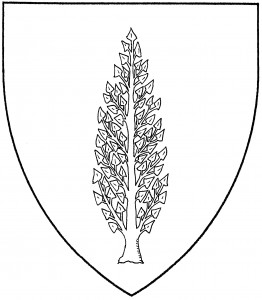
Poplar tree (Period)
For conflict purposes, the Society defines two broad categories for trees: coniferous trees, which are typically drawn with triangular foliage, and so-called “generic” trees, which are typically drawn with rounded or shapeless foliage. Pine trees and fir trees are examples of coniferous trees; oak trees and orange trees are examples of generic trees. Difference is granted between categories of tree; no difference is granted for type of tree within the same category.
Of special note are the willow and poplar trees. The willow tree is found in period armory in the canting arms (Latin salix) of von Salis, 1605 [Siebmacher 204]. The form used in period armory is the white willow; if the “weeping willow tree” is intended, it must be specified in blazon. No difference is granted between these variants.
The poplar tree had been ruled a step from period practice, based on the lack of period examples – particularly as it’s usually depicted, as the elongated “Lombardy poplar” [Fox-Davies, The Art of Heraldry, p.65]. However, the poplar tree in this form has since been documented, in the arms of Cardinal Dominic de Capranica, c.1550 [BSB Cod.Icon 267:179]. The Lombardy poplar, as it’s modernly known, is the default heraldic poplar tree for Society use.
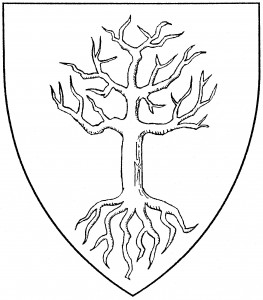
Tree blasted and eradicated (Period)
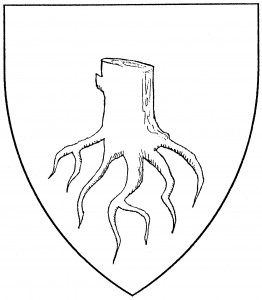
Tree stump eradicated (Period)
Both the top and the base of a tree are subject to variation. At the base, the Society default is with a small upper portion of the roots showing, as might be seen in nature. The roots may also be “eradicated”, with the entire root system showing, as if forcibly uprooted from the ground; or “couped”, with the trunk cut cleanly, and no roots shown at all. The illustrations show an oak tree (with default roots), a pine tree couped, and an orange tree eradicated (and fructed as well).
At the top, the default is with leaves or foliage; but it also may be “blasted” or leafless, showing only the bare branches. This variant is found in de Bara, 1581 [77], who terms it un arbre sec (“a dry tree”). The illustration shows a tree blasted and eradicated.
A “stump” or “stock” is the bottom part of the tree, left after the tree has been felled; it was the canting badge of Zouche, c.1510 [HB 162]. The stump’s top edge is usually couped, but is sometimes found “snagged”, with the rough top surface tilted to the viewer. In Society blazonry, a “trunk” is a somewhat longer form of stump, while a “log” is simply a cleanly lopped form of a ragged staff. The illustration shows a stump eradicated.
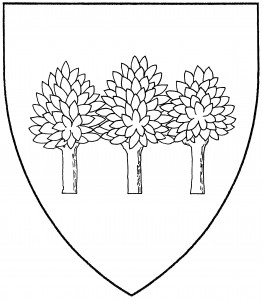
Hurst of trees couped (Period)
A group of trees with their foliage conjoined may be called a “hurst”. When thus conjoined, the number of trees, even when blazoned, counts for no difference. Hursts are often issuant from a mount in mundane heraldry, but this fact is always specifically blazoned in Society heraldry. The illustration shows a hurst of trees couped.
For related charges, see: bush, créquier, slip, staff (ragged). See also fruit, leaf.
The King of Drachenwald bears: Or, in fess three pine trees eradicated gules, overall a dragon passant coward, all within a laurel wreath, in chief an ancient crown sable.
The Baron of Gyldenholt bears: Azure, on a hurst Or a laurel wreath vert, a bordure Or.
The Order of the Willow, of the Middle, bears: Purpure, a weeping willow tree eradicated Or.
Ioseph of Locksley, the Rhymer, bears: Vert, a tree eradicated argent.
Melodia of Okhurste bears: Per bend Or and argent, a tree blasted and eradicated azure.
Christian of Orange bears: Argent, an orange tree fructed proper issuant from a mount vert.
Catalina Estevez de Teixeira bears: Quarterly Or and gules, a yew tree eradicated proper.
Mustafa al-Jabal Tariqi bears: Argent, a palm tree couped gules within a bordure sable.
Allendale of the Evergreens bears: Argent, a pine tree proper.
Tala al-Zahra bears: Argent, an olive tree fructed and eradicated and a bordure gules.
Toly Woodsman bears: Per chevron argent and azure, three tree stumps counterchanged.


